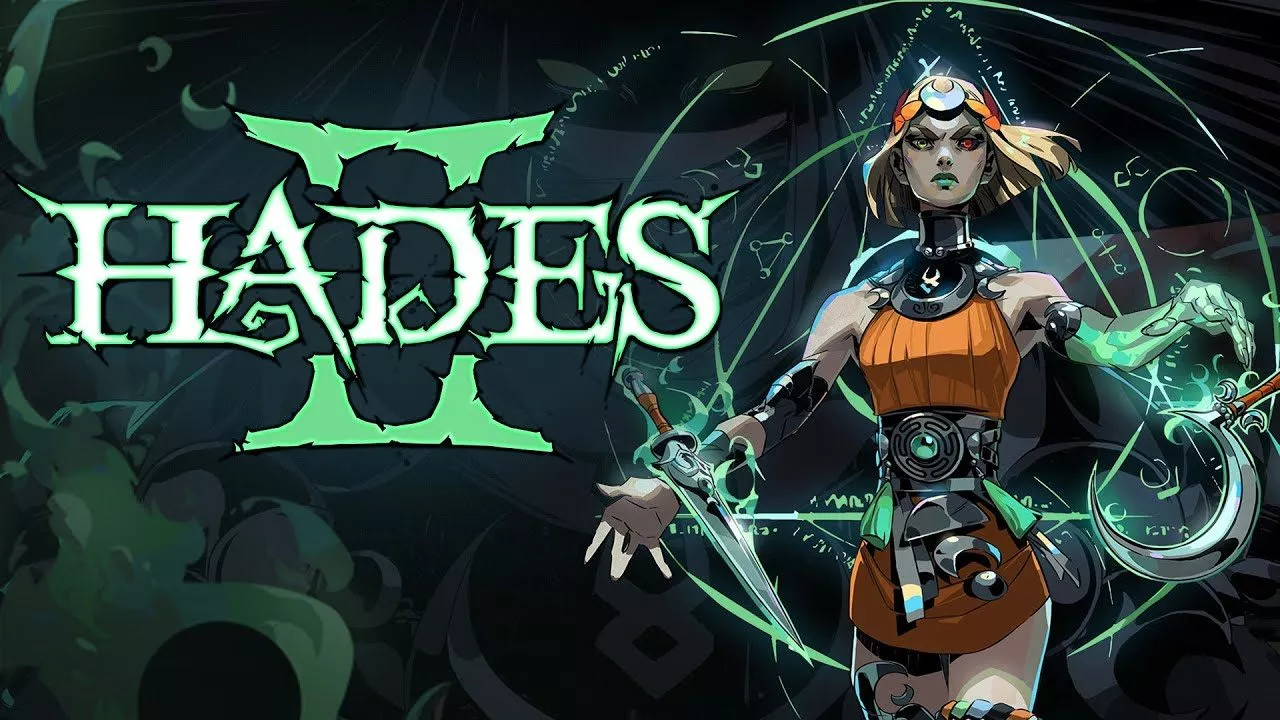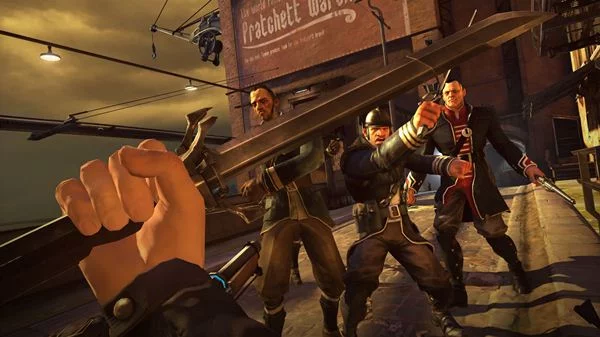When it first made its way into gaming news, Dishonored was one of those titles I was both anticipating and dreading. Touted as ‘open-ended’ and ‘promoting player choice,’ it brought to mind both the optimum dream of a truly open-ended game, and the titles of the past where ‘open-ended’ meant choosing one of two set options. Thankfully, Dishonored falls into the former category.
Arkane Studios’ title tells the story of Corvo, the Lord Protector to the Empress of Dunwall. On return from a quest to find a cure for a dastardly plague, he has to watch as his Empress is brutally murdered and her daughter is taken captive. The whole fiasco is pinned on him, and he’s imprisoned for months awaiting execution. You’re broken out by a group of conspirators who intend to find Emily and place her on the throne, toppling the oppressive government of the men who killed her mother. They set you to the task of becoming an assassin, eliminating all obstacles to their plan. Approaching this game I was strongly reminded of Deus Ex: Human Revolution‘s highly advertised ‘three pillar’ approaches giving the option of stealth, investigation or combat. Dishonored feels very similar, but without the speed-bump of out-of-place boss battles. In fact, the game has no ‘bosses’ whatsoever, as your assassination targets can be taken down as easily as any other enemy in the game.
Overall, the game only has nine missions – but to use this to label the game as shallow is belying the point of the whole thing. Whilst you are told you can approach the game in any way – stealth, non-lethal, brute assault and so on – the game opens up to those who explore and sneak their way across the expansive environments on offer. You could blunder directly to your target, stab them in the neck and be done, but you’d be doing Dishonored a disservice. Every corner of the game is filled with unique dialogs between NPCs, books and messages that expand the lore of Dunwall, puzzles and treasures that allow you to expand your repertoire of abilities.
On top of the more traditional abilities on offer such as blades, crossbows and pistols, you’re also inducted into the world of black magic early in the game. Given access to these powers by the Outsider, a shady otherworldly being with a penchant for pushing you and questioning your motives, you’ll soon find yourself experimenting with these abilities to explore the world and take down enemies efficiently or at the very least creatively.
The key power is Blink, a short-range teleport that really completes the parkour-esque traversal system of Dishonored. The ability to jump about the world makes it all the more enticing to explore and investigate. For the more combat-minded there are offensive abilities such as Force Pu– er, Windblast, a Devouring Swarm of rats and a Possession ability you can use to turn enemies on each other. These powers and your other abilities are upgraded by collecting Runes, mystical objects scattered throughout each game zone – another good reason to take the longer path to your objective.
One of the key features of the game is that each target has multiple ways of being taken down. Most importantly, every one has a non-lethal way of ‘neutralising’ them rather than outright murder. One example that has been publicised in the leadup to the game’s release are the Pendleton twins, who can be killed or instead kidnapped and sent to work in their own family’s mines, eliminating the threat they pose without getting any blood on your hands. That’s not to say there’s no variety in the ways to take your target down lethally, of course – as demonstrated by Dan Hindes of Sneaky Bastards, in his video “The Many Deaths of Lady Boyle”:
Visually, the game is a stylish treat – the environments and people of the world feel almost painted, giving the game a slightly washed-out feeling that firmly cements its position as a prior-era ‘alternate history’ environment, mixing Industrial and pre-Industrial elements. This is also demonstrated in the construction of the environments, with much of the modern technology brought about by the world’s ‘Whale Oil’ revolution feeling tacked-on to a more established world. Environmental sounds and music add credence to this feeling, with booming announcements from speakers intermingled with the sounds of the ocean, scurrying rats, complaining guards and shambling plague victims.
If you intend to play this game a specific way for achievements or a challenge, ie no kills or non-lethal, I highly recommend looking to the PC version – having a quicksave/quickload helps greatly for undoing little mistakes along the way. Whilst it’s entirely possible to do this on the console versions the act of saving and loading constantly on the 360 for my attempt at a non-lethal play became frustrating and a little slow. If you can avoid it, I recommend you do so.
All in all, Dishonored offers a lot to those willing to explore it. I’d say it’s one of the few titles I will intentionally do multiple playthroughs of, as the gameplay experience is vastly different depending on how you approach it. A truly enjoyable new IP, with a depth I’d love to see more of in future. Get stabbin’, everyone.
This article may contain affiliate links, meaning we could earn a small commission if you click-through and make a purchase. Stevivor is an independent outlet and our journalism is in no way influenced by any advertiser or commercial initiative.
























